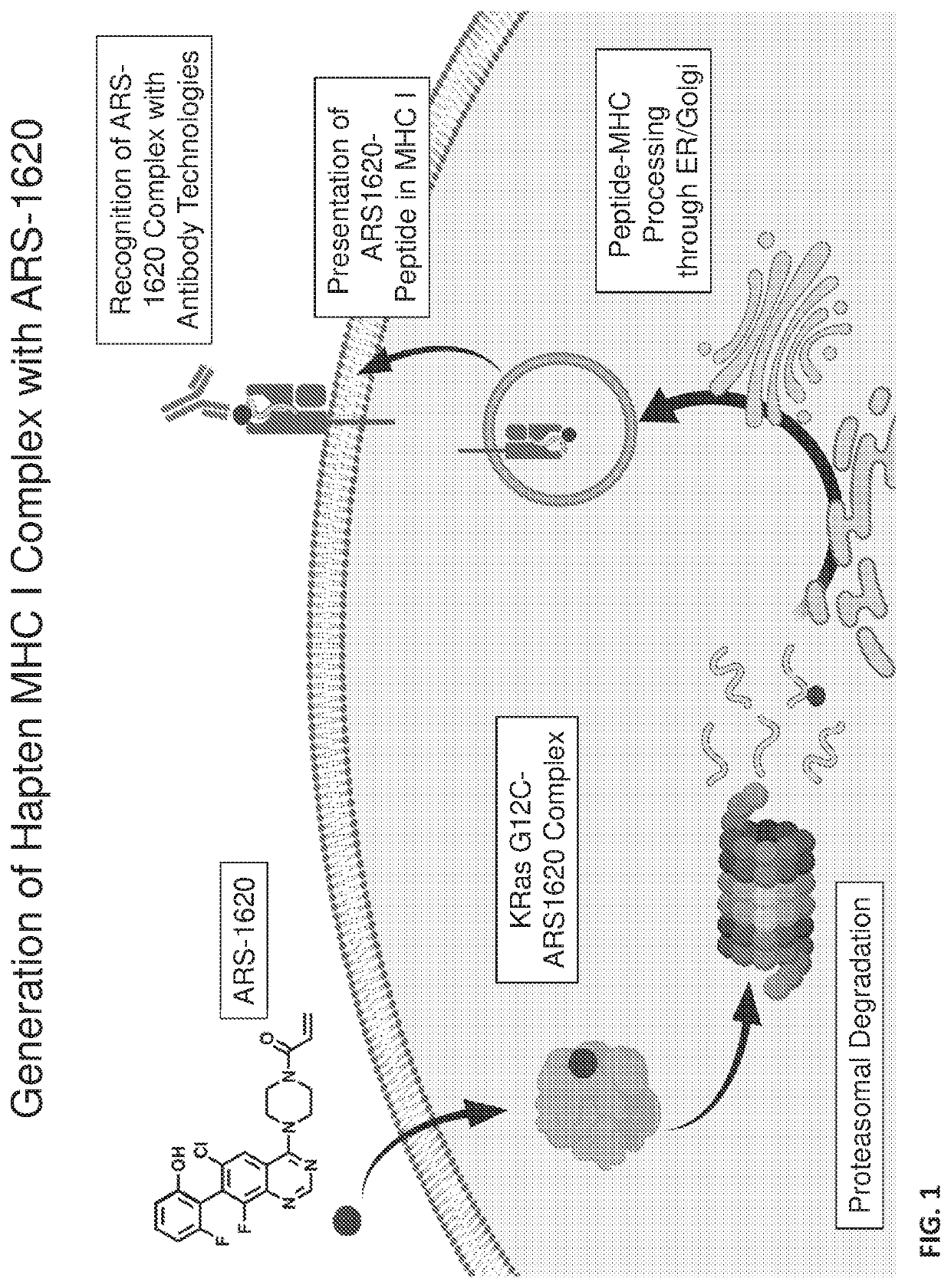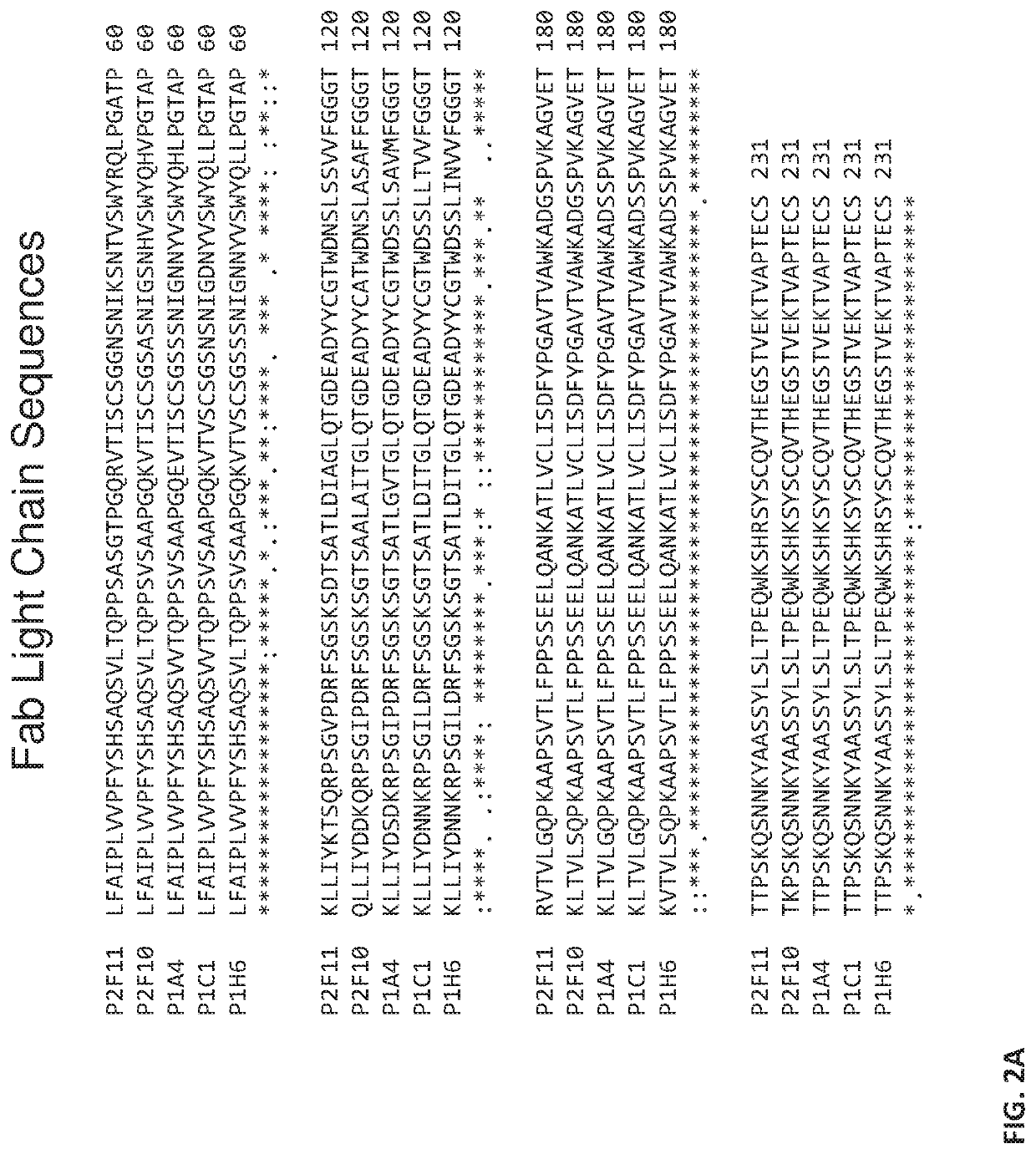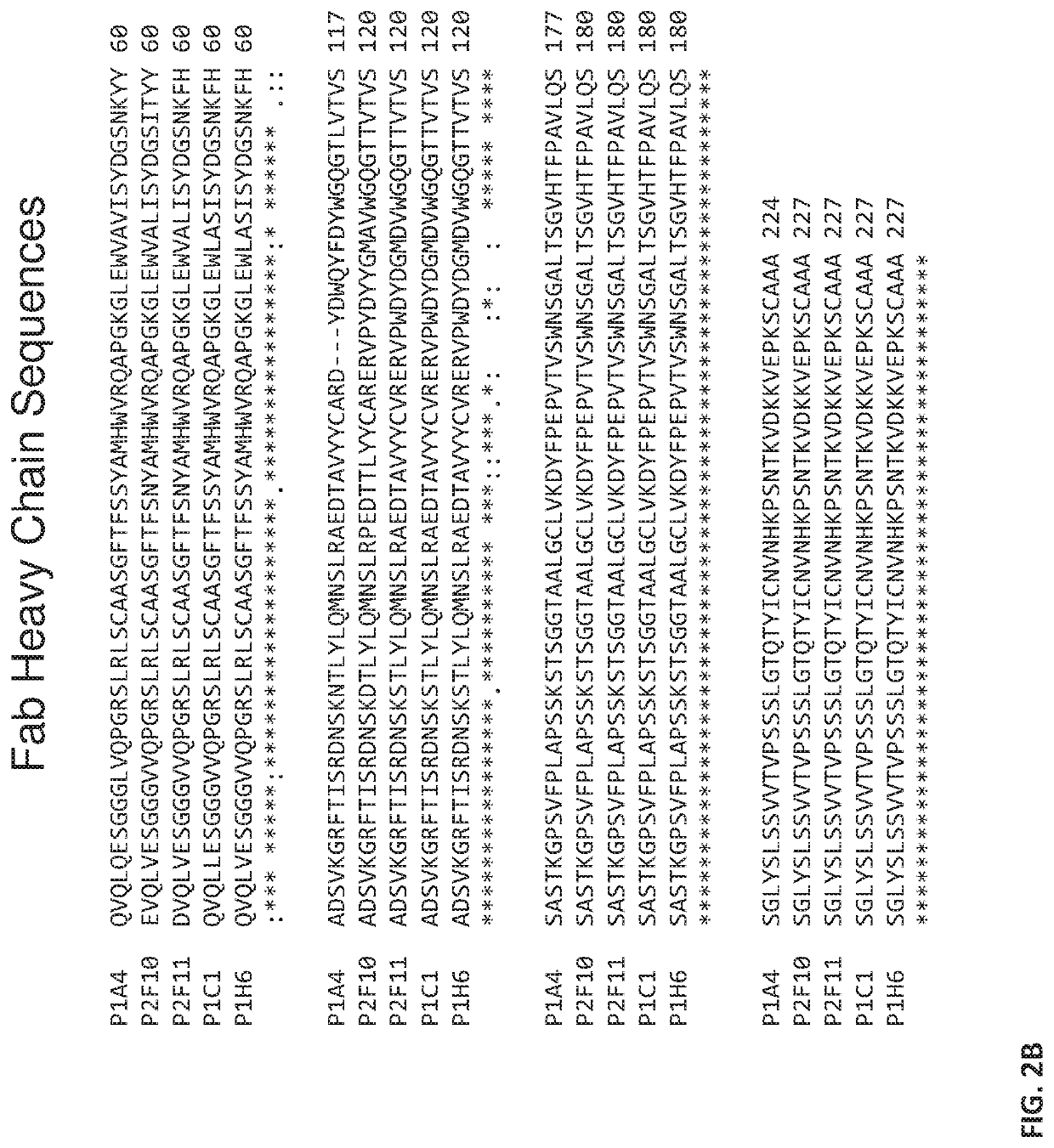Chemically controlled monoclonal antibody target engagement
a monoclonal antibody and target technology, applied in the field of chemically controlled monoclonal antibody target engagement, can solve the problems of fundamentally restricted scope, limited applicability, and toxicities of “on-target/off-tumor” antibodies
- Summary
- Abstract
- Description
- Claims
- Application Information
AI Technical Summary
Benefits of technology
Problems solved by technology
Method used
Image
Examples
example 1
1620 Antibodies for KRas G12C Directed Immune Targeting
[0096]This example describes the isolation and characterization of antigen-binding fragments (Fabs) that react with a tumor-specific neoantigen. The neoantigen is produced by attachment of an oncoprotein-specific hapten (ARS-1620) to an oncoprotein (KRas G12C), followed by processing and presentation on the cell surface as a peptide-MHC (pMHC).
[0097]ARS-1620-specific Fabs were isolated using the Craik lab panning platform with a human, naïve Fab-phage display library (Duriseti et al., J Biol Chem 285, 26878-26888, 2010). In order to bias the Fabs away from MHC allelic restriction, the Fabs were panned against a minimal antigen of a KRas G12C 10-mer peptide labeled with ARS-1620 on cysteine. As this antigen did not contain any MHC molecules (no 02-microglobulin light chain or class I heavy chain), the binders were biased towards peptidic and small molecule epitopes. From a Fab-phage library with a diversity of 4×1010, four rounds...
PUM
| Property | Measurement | Unit |
|---|---|---|
| Length | aaaaa | aaaaa |
| Cytotoxicity | aaaaa | aaaaa |
| Chemiluminescence | aaaaa | aaaaa |
Abstract
Description
Claims
Application Information
 Login to View More
Login to View More - R&D
- Intellectual Property
- Life Sciences
- Materials
- Tech Scout
- Unparalleled Data Quality
- Higher Quality Content
- 60% Fewer Hallucinations
Browse by: Latest US Patents, China's latest patents, Technical Efficacy Thesaurus, Application Domain, Technology Topic, Popular Technical Reports.
© 2025 PatSnap. All rights reserved.Legal|Privacy policy|Modern Slavery Act Transparency Statement|Sitemap|About US| Contact US: help@patsnap.com



